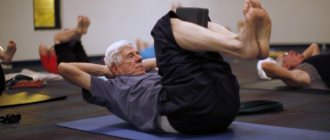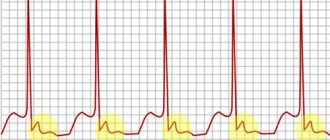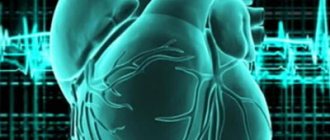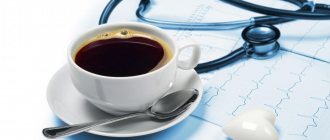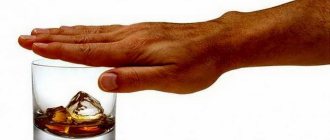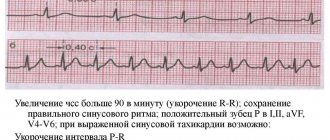Sinus arrhythmia contraindications in sports
Disturbances in the occurrence and conduction of cardiac impulses (arrhythmia) can occur due to heart disease or failures in the regulation of the cardiovascular system against the background of neurological, hormonal or metabolic pathologies.
Depending on the type and cause of the arrhythmia, approaches to treatment and recommendations for activity regimens change. The vast majority of patients are indicated for physical activity, but their intensity is determined individually.
Can everyone play sports if they have arrhythmia?
The heart muscle is trained in the same way as other muscle tissues in the body, so both inactivity and excessive tension are not indicated for its normal functioning.
For diseases of the cardiovascular system, reasonable exercise has a therapeutic effect and stimulates the absorption of glucose and oxygen from the blood, which are necessary to obtain energy.
Regular exercise puts the heart into an economical mode, increasing strength and reducing heart rate.
Conduction system of the heart
But at the same time, there are types of arrhythmia for which there are contraindications to playing sports. These include:
- paroxysmal tachycardia;
- atrial fibrillation (attacks);
- frequent (more than 8 per minute) extrasystoles.
These rhythm disturbances are especially dangerous against the background of a previous myocardial infarction, aneurysm of the heart and blood vessels, valve defects or septal defects, heart failure, starting from stage 2B, arterial hypertension and severe concomitant diseases of the kidneys, liver, and diabetes mellitus.
We recommend reading about the forms of atrial fibrillation. You will learn about what atrial fibrillation is, clinical types of atrial fibrillation, complications, and basic principles of treatment. And here is more information about the treatment of atrial fibrillation.
Permissible physical activity for cardiac arrhythmia
In order to benefit from physical exercise if you have any type of arrhythmia, you must consult a cardiologist and
diagnostic tests. These include:
- ECG in monitoring mode;
- stress test on a treadmill or bicycle ergometer;
- Ultrasound and echocardiography of the heart (if indicated).
Using these methods, you can determine the possible level of stress and its tolerance, the maximum heart rate at which you can train, and the risk of complications.
If the patient has not previously exercised, then exercise should begin with walking and gradually increase in duration and pace. In particularly difficult situations, the first stage may be breathing exercises and simple exercises, walking in place. The main rules for patients with arrhythmia are a slow pace, smooth movements and regular activity.
The most useful types of physical activity for heart rhythm disturbances:
- walking;
- physiotherapy;
- yoga;
- Pilates;
- swimming.
In the future, when the condition normalizes and in agreement with the attending physician, light running, cycling, dancing, and sports games can be added.
Not indicated in the presence of rhythm disturbances, training with weights, jumping, wrestling, static exercises, participation in competitions.
Options for physical activity for sinus and atrial fibrillation
Sinus arrhythmia is a heart rate disorder that occurs in the sinus node. That is, the place of generation of cardiac impulses remains normal, but their periodicity is disrupted. This type is the most favorable, in contrast to atrial fibrillation.
This pathology is characterized by chaotic and frequent contraction of muscle fibers, which can cause such a serious condition as ventricular fibrillation with a fatal outcome. Therefore, the level of permissible physical activity for various forms of arrhythmia may differ significantly.
Sinus arrhythmia and sports activities
Recommendations for patients with sinus arrhythmia usually allow the choice of sport according to individual preferences, since in many cases this is the norm in children and adolescents.
Disturbances in the electrolyte composition of the blood, changes in the level of sex hormones, vegetative-vascular dystonia and neuroses that cause such rhythm disturbances are easily corrected and do not cause significant complications.
To clarify the diagnosis in doubtful cases, patients undergo a complete cardiac examination. The criteria for admission to sports are:
- Absence of pain, weakness, episodes of loss of consciousness during physical activity.
- The ECG shows no signs of hypertrophy or decreased myocardial activity.
- Tests with physical activity show its good tolerance.
- When monitoring the ECG there are no signs of organic pathology.
Atrial fibrillation and physical activity
Atrial fibrillation can occur at any age; its causes in young people are most often rheumatic heart disease and disorders of the thyroid gland, and in older people - atherosclerosis and myocardial dystrophy.
Paroxysmal (attacks) rhythm disturbances are dangerous, and the transition to a permanent form is considered a favorable outcome. Therefore, in the absence of organic changes in the myocardium (infarction, aneurysm, threat of thromboembolism, defects), patients with stable atrial fibrillation may be allowed physical activity if the following conditions are met:
- Sports training is prohibited, but recreational physical training is allowed.
- Exercises are only aerobic - walking, cycling, light jogging, swimming in the pool.
- The pulse rate cannot be higher than 180 beats per minute minus age, and breathing through the nose should not cause difficulty.
- The rate of increase in loads is very slow.
Source: https://barhmel.ru/sinusovaja-aritmija-protivopokazanija-v-sporte/
Cardiac arrhythmia: why is it dangerous? How to live with the disease?
Cardiac arrhythmia is a disease that is accompanied by pathological deviations from the normal heart rate. The reasons for the development of this disease can be different, as well as the symptoms of its manifestation. It is for this reason that treatment for cardiac arrhythmia can begin only after a thorough examination of the whole body and determination of the factor that led to the progression of this disease.
Many patients are concerned about the likelihood of developing various complications after an illness, why arrhythmia is dangerous and, most importantly, whether it is possible to die with such a pathology.
Of course, cardiac arrhythmia is a serious disease that can lead to thromboembolic complications and also develop into a chronic form of heart failure. All this frightens patients and forces them to completely reconsider their lifestyle and favorite habits, determine for themselves what they can do and how to live further.
Is it possible to play sports?
It's no secret that active sports have a significant impact on the number of heartbeats. It is allowed to play sports if various heart diseases are diagnosed, the main thing is not to overdo it and monitor your well-being.
The main principle in this situation is not to overexert your body, as well as reasonable dosages of load depending on the form of cardiac arrhythmia. One of the types of health-improving physical education is jogging, which combines several health-improving properties:
- Running has a beneficial effect on the cardiovascular system, and in particular on small vessels such as capillaries, venules and arterioles. Any person should run periodically, otherwise the body will disrupt the process of supplying blood to various tissues and atrophy of capillary vessels will develop.
- Running, which is health-improving, helps open sealed capillaries. In addition, it promotes the germination of new capillaries into the affected areas, which plays an important role.
- Jogging keeps the heart steady and moderate, and this type of physical activity is accessible to everyone.
To reduce the effect of capillarization, it is necessary to constantly maintain intense cardiac activity over a certain period of time, and this applies to both the strength of cardiac output and the frequency of contractions. If the heart is actively working, intense sports training can lead to a deterioration in well-being, and with low work, the capillarization process will not be as intense.
It is recommended to run at a leisurely pace if you have cardiac arrhythmia, using as little strength and energy as possible. The main thing is that playing sports, and, in particular, running, brings pleasure and makes you want to live on.
Where and how best to run?
- In case of cardiac arrhythmia, recreational running requires dosing of physical activity, so it is best to do it in a regular stadium.
- Jogging can be organized at any time, but it is best to do it in the evening.
- The best option would be to run at least three times a week, and by exercising in this mode you can achieve the maximum capillarization effect and not overload the body.
Despite the positive effect of playing sports for arrhythmia, in some cases running is strictly contraindicated. Running can cause a number of complications in those people who have severe heart rhythm disturbances.
The main condition for classes should be their systematicity, otherwise the health-improving effect of the classes will be minimal. That is why health running should be carried out in any weather, regardless of the time of year.
Alcohol for arrhythmia
It has long been believed that drinking alcohol in any quantity is not recommended, since it has a negative effect on the functioning of the heart. Alcohol leads to the development of severe consequences, the cause of which is a violation of the rhythm of cardiac activity.
Medical statistics claim that alcohol provokes the development of cardiac arrhythmia by 100%. One of the most common heart pathologies developing for this reason is atrial fibrillation. Alcohol and the heart are contradictory things, although many patients are convinced of the opposite. Alcohol has a negative effect on the human body:
- It has been proven that alcohol, even in small quantities, leads to a mismatch between the functioning of the heart and nervous system.
- Drinking alcohol if you have heart problems increases the risk of developing various complications several times.
- Alcohol has a stimulating effect on increasing myocardial excitability, increasing heart rate and blood pressure.
Everyone knows that when drinking alcohol, a person turns red and this is a consequence of vasodilation. The heart is also considered a vessel, but its expansion cannot occur under conditions of insufficient nutrition. As a result, alcohol leads to myocardial infarction, progression of coronary disease and even death.
Alcohol causes disturbances in the rhythm of cardiac activity and this is especially noticeable at the moment of recovery from binge drinking, when an accumulation of metabolites is observed in the body. It is under the influence of these derivatives of incomplete oxidation of ethyl alcohol that death occurs, regardless of the age category of the patient.
Alcohol is absolutely contraindicated for people with cardiovascular disease, and talk about the beneficial effects of a small amount of wine on the body is simply a myth.
Coffee and arrhythmia
Many doctors, in the old-fashioned way, recommend that their patients suffering from arrhythmia limit their consumption of coffee, and it is best to completely eliminate it from their diet. It has long been believed that drinking coffee leads to:
- increased blood pressure;
- increased heart rate.
It is on the basis of these facts that many are confident in the negative effect of coffee on the cardiovascular system. Its use was strictly prohibited for people with various diseases, including heart rhythm problems.
Studies have confirmed that coffee does not cause an increase in blood pressure after the introduction of caffeine into the human body and it can be consumed by people with various diseases.
In addition, coffee is not a cause of the development of ventricular arrhythmia in those patients who have suffered a myocardial infarction. Drinking coffee did not lead to disruption of the cardiovascular system in those people who were diagnosed with arrhythmia and who lived with it for a long time. This is why a ban on drinking coffee, as well as caffeinated foods and drinks, is completely pointless.
Despite the claim that coffee leads to heart problems, it can be drunk for such diseases. How much coffee can you drink without putting your health at risk?
- drinking coffee is allowed in small quantities;
- large doses of coffee lead to gradual depletion of nerve cells, so it is best to drink this drink without fanaticism;
- To reduce the possible effect of coffee, you can drink it with cream or milk.
Cardiac arrhythmia is a serious disease, the progression of which in the body can lead to irreversible consequences. That is why patients with this pathology need to carefully reconsider their lifestyle, highlighting the positive and negative aspects of it and decide how to live with this disease.
Any kind of sport can be done after consultation with your doctor, and the degree of dosage of physical exercise will depend on the form of heart disease and its severity.
cerdcesosud.ru
Permissible and prohibited physical activity for arrhythmia
Disturbances in the occurrence and conduction of cardiac impulses (arrhythmia) can occur due to heart disease or failures in the regulation of the cardiovascular system against the background of neurological, hormonal or metabolic pathologies.
Depending on the type and cause of the arrhythmia, approaches to treatment and recommendations for activity regimens change. The vast majority of patients are indicated for physical activity, but their intensity is determined individually.
Arrhythmia and sports in children: dos and don’ts
Sinus arrhythmia in children is a normal condition that does not require treatment or restrictions in the choice of sports. But this type of rhythm disturbance also occurs with myocarditis, structural defects of the heart and blood vessels, tumors and diseases of the endocrine system.
Therefore, before starting classes, it is necessary to exclude these causes by undergoing a full examination by a pediatrician. If there are no concomitant or heart diseases, then, as a rule, children can play sports, but do not allow excessive strain. It is not recommended to take part in competitions until the condition stabilizes.
We recommend reading about the causes and symptoms of atrial fibrillation. You will learn about the causes of AF, types and types of atrial fibrillation, and principles of treatment. And here is more information about the features of administration and indications for prescribing Anaprilin for arrhythmia.
Causes of arrhythmia after sports
A low pulse (bradycardia) in trained athletes is not a pathological condition; in some it can drop to 30 beats per minute, without leading to disruption of the blood supply to the organs, as it is compensated by a large cardiac output.
The main rhythm disturbances after sports training manifest themselves in the following forms:
- Respiratory sinus arrhythmia due to increased tone of the parasympathetic nervous system: when inhaling, the pulse quickens, when exhaling it slows down.
- Extrasystoles are associated with overstretching of the cavities of the heart and lack of oxygen during high physical activity.
Such arrhythmias do not need correction and disappear without a trace after rest. In untrained people, shortness of breath and rapid pulse may be signs of insufficient heart function, so if discomfort occurs, and especially pain in the heart after physical activity, you should consult a cardiologist.
Sports activities can be recommended by a cardiologist in case of heart rhythm disturbances, but provided that the reasons for their development in the form of organic changes in the myocardium are excluded. Strength exercises and high-intensity training are not recommended for patients with arrhythmia.
Source: https://CardioBook.ru/fizicheskie-nagruzki-pri-aritmii/
Tachycardia and different sports
Tachycardia is a condition in which the heart beats at a rapid pace. The recognized norm for an adult is a pulsation of 60-80 beats per minute in a sitting position and up to 100 in a standing position. In children, the heart beats at a faster pace, and the number of heartbeats depends on age.
With tachycardia, too fast a heartbeat leads to disruption of blood circulation in the body. Insufficient oxygen in the blood causes shortness of breath, weakness, dizziness, darkening of the eyes and even fainting.
There is physiological tachycardia, that is, an increase in heart rate as a result of physical activity (for example, after running). It also occurs with severe anxiety, overeating and increased body or environmental temperature.
- All information on the site is for informational purposes only and is NOT a guide to action!
- can give you an ACCURATE DIAGNOSIS !
- We kindly ask you NOT to self-medicate, but to make an appointment with a specialist !
- Health to you and your loved ones!
This condition does not require treatment, unlike pathological tachycardia, which occurs at rest. It is an increased heart rate for no apparent reason that is a reason to consult a cardiologist.
And although it is known that an active lifestyle is beneficial for the heart, its safety during tachycardia is questioned by many. Let's figure out what physical activity is acceptable for people in this condition.
Sports for arrhythmia: indications and contraindications for training
Victoria Popova
Cardiologist
Higher education:
Cardiologist
Saratov State Medical University named after. IN AND. Razumovsky (SSMU, media) Level of education - Specialist 1990-1996
Additional education:
“Emergency Cardiology”
1990 - Ryazan Medical Institute named after Academician I.P. Pavlova
Contacts
Everyone knows the fact that sport benefits human health by training the heart muscle, increasing the body's endurance and its level of resistance to infections.
However, a manifestation such as arrhythmia, which is a type of heart pathology, can significantly reduce the likely benefits of sports activities, worsening the patient’s well-being and provoking a number of negative health consequences.
Arrhythmia and sport are by no means mutually exclusive concepts, since with a reasonable approach and constant monitoring of one’s own well-being, it is possible to continue playing sports without danger to health.
Since arrhythmia is a consequence of specific causes and provoking factors, knowledge of them will help determine how dangerous or, conversely, safe a certain physical activity is.
After all, sports activities can bring significant benefits even if there are problems in the functioning of the cardiac system, provided that before starting to apply the load, the patient has undergone a full examination by a doctor, a diagnosis has been made, and a type of activity has been selected that will not cause deterioration in health.
general information
Sinus arrhythmia implies a malfunction of the heart when the difference between heartbeats is more than 10% (if this figure is less, there is no pathology). At the same time, the pulse remains within normal limits (60-80 beats per minute).
Sinus arrhythmia must be present in a person, since in a calm state the heart beats moderately, and in response to excitement or during physical activity, the pulse quickens.
It allows you to see the level of adaptation of the heart muscle to stress and is, within certain limits, a sign of good health.
According to statistics, arrhythmias account for 10-15% of all heart diseases. In recent years, the number of cases has been growing. Sinus arrhythmia is most often observed in older people, as well as in those who abuse alcohol or drugs.
In children, sinus arrhythmia is present quite often, but in most cases it is not a pathology, since the nervous system simply cannot keep up with the growing body.
The disease does not require treatment if it develops against the background of severe nervous experiences. As soon as a person relaxes, it goes away on its own. To calm down in this case, you can use herbal remedies (valerian, motherwort).
Symptoms of the disease, especially in the early stages, do not appear clearly. A person may not realize that he has health problems for quite a long time.
Classification
Sinus arrhythmia is divided into the following types, determined by heart rate (HR):
- Tachyarrhythmia, in which a rapid heartbeat of over 80 beats per minute is monitored; blood does not fill the heart in full, which is why all internal organs suffer and blood flow is disrupted. Identified in people with problems with the thyroid gland and autonomic nervous system;
- Sinus bradycardia – the patient’s heart rate is less than 60 beats per minute; the cause may be fasting or a long diet, increased intracranial pressure, thyroid problems, or taking certain medications. A decrease in heart rate below 40 beats per minute can lead to fainting or even cardiac arrest and death;
- Extrasystole is a premature contraction of the heart muscle that occurs due to nervous overload and stress, bad habits, and lack of magnesium and potassium in the body. The cause may also be forms of ischemic heart disease and dystrophy of the heart muscle. Cardiac output is unproductive. The patient experiences a feeling of a sinking heart, dull tremors in the heart area, a feeling of anxiety and lack of air;
- Physiological (respiratory) sinus arrhythmia is not a deviation from the norm; it manifests itself in a slowdown in heart rate during exhalation and acceleration during inhalation. Inherent in children and adolescents, in adults sinus respiratory arrhythmia sometimes accompanies vegetative-vascular dystonia, brain diseases, and appears after severe infections.
Stages
The following stages of the disease are distinguished:
- Mild (moderate) sinus arrhythmia - for the most part does not manifest itself in any way, can be a specific feature of a particular organism, and can also accompany old age. It is not a deviation from the norm if it is associated with hormonal changes in the body (in adolescents). It is necessary to consult a doctor to determine the exact cause and nature of the disease.
- Sinus arrhythmia of the first degree - symptoms occur rarely and, as a rule, go away on their own, the patient does not experience discomfort. Often manifested in breathing disorders (respiratory arrhythmia), detected in adolescents during puberty, in athletes, and in older people. Consultation with a doctor is required, especially if frequent fainting occurs.
- Sinus arrhythmia of the second degree - the symptoms are most clearly expressed and coexist with various heart diseases. A person develops severe weakness, fatigue, and shortness of breath.
- Sinus arrhythmia of the third degree - the symptoms appear very clearly. It is extremely important to carry out timely diagnosis to identify the exact cause of the disease and prescribe treatment. There is a possibility of developing serious complications. An examination of all internal organs is required.
In children and adolescents:
- severe stress, psychological depression;
- intrauterine developmental defects;
- tumors and heart defects;
- pathologies of internal organs;
- heredity;
- poisoning;
- long-term and severe infections;
- myocardial diseases.
In young and middle-aged people:
- high blood pressure;
- heart defects;
- chronic lung and thyroid diseases;
- alcoholism and smoking;
- viral infections;
- stress;
- heart surgery;
- lack of potassium and magnesium in the body.
In older people, sinus arrhythmia, in addition to the above reasons, is almost always a manifestation of another heart disease, a consequence of other health problems, including age-related ones. Risk factors may include: taking medications, rich fatty foods, abuse of coffee and cigarettes.
Symptoms and signs
Symptoms of sinus arrhythmia are associated with abnormal heart rhythms. A person complains of “fading” of the heart, shortness of breath, lack of air, dizziness, weakness and fainting; he has panic attacks associated with feelings of fear and anxiety.
The first signs of the disease are:
- palpitations; palpitations;
- pain on the left side of the chest, radiating to the arm;
- inability to take a full breath;
- dyspnea;
- pulsation in the temporal region;
- attacks of severe weakness, dizziness, fainting;
- coldness of the extremities.
We suggest you read: Exercises for arrhythmia and tachycardia
Source: https://MedLazaret.ru/kardio/aritmiya-u-sportsmenov.html
What type of sports do doctors allow to play sports?
Well-chosen types of sports activity will help normalize myocardial activity and maintain health during arrhythmia.
Cardiologists advise patients to pay attention to:
- Swimming. People with arrhythmia are allowed to visit the pool 4 times a week. The main condition is that the water should be at a comfortable temperature. To prevent the development of complications, it is necessary to swim in styles that do not involve stress on the respiratory system for a long period of time. It is recommended to avoid strong swings of the limbs.
- Yoga and breathing practices. Such training is especially useful if the exercises are carried out outdoors. Properly selected breathing exercises will help saturate the myocardium with oxygen, which will have a positive effect on the nervous system and brain activity. Unlike other sports, yoga (hatha) can be practiced with atrial fibrillation. The main condition is to first consult with a doctor and determine the absence of contraindications.
- Sport fishing. This type of activity helps restore health and at the same time is a great pastime. Fishing is useful for people of any age, regardless of the form of pathology.
- Physiotherapy. A referral to classes is issued by a cardiologist. When selecting a complex, the doctor takes into account which body system needs to be corrected.
If a patient is diagnosed with arrhythmia with severe rhythm disturbances, the doctor may prohibit engaging in even the above sports (if there is a risk to the patient’s health).
To obtain permission for exercise therapy or another type of physical activity, special tests are carried out. They will provide accurate information on the body’s reaction to the loads it bears and the possibility of performing them in everyday life. Below is a table describing the studies without which tolerance to loads is impossible.
| Method | Description |
| Holter ECG | Producing a graphical image of the heart's work during daily measurements. |
| Treadmill test | Recording changes in heart rate during exercise on a treadmill with changes in speed. |
| Bicycle ergometry | Checking heart rate on an exercise bike with periodic changes in pedal resistance. Done after meals. |
Treatment of arrhythmia with physical exercise is possible after diagnosis, which takes place only under the supervision of medical staff. When performed correctly, the tests are safe. At the same time, pulse and blood pressure are measured and the well-being of the subject is monitored. If after the research any physical training is prohibited, then they are limited to walking.
Sinus respiratory arrhythmia in athletes
› Arrhythmia
02.03.2020
Arrhythmia is a common disease among athletes. The pathology is characterized by a disruption in the heart rate and contractions of the heart muscles.
Arrhythmia can lead to dangerous complications and serious health problems.
Often, arrhythmic disturbances and conduction disturbances are observed as symptoms of overexertion syndrome, which is why training has been intensified recently.
Common provocateurs
In normal condition, the heart of a person who does not engage in sports makes 60-70 beats per minute. During this time, the athlete experiences 50-55 blows, which is the norm for them. If a sports person experiences heart rhythm disturbances, then in a calm state the frequency either increases or decreases. The main causes of the disease are:
- heart defects;
- myocardial infarction;
- ENT pathologies: sore throat, sinusitis, otitis media;
- caries;
- disruptions in the endocrine system;
- allergic reactions;
- cholecystitis;
- low and high blood pressure;
- influence of drugs;
- mechanical chest injuries.
Causes of development in athletes
In this group of patients, all types of arrhythmia are observed, which depends on the nature of the disturbance in automaticity, conductivity and excitability, as well as the type of sports activity. For example, weightlifters often develop atrial fibrillation.
This type of disorder occurs 2 times more often than in people without a sports background or present. With physical overstrain, extrasystole often occurs. Pathology can appear with any type of activity.
Complications of severe types of arrhythmia are possible, which is determined by the duration of intense training.
In a third of athletes, disruptions in atrioventricular conduction are observed against the background of cardiosclerosis (proliferation of scar tissue); in the second third, the condition is associated with overtraining, intoxication in the presence of infections. In the remaining 1/3 of athletes, the problem arises as a complication of vagotonia (VSD syndrome associated with overexcitability of the vagus nerve).
How does it manifest?
Often, athletes exhibit sinus-type arrhythmia. It is characterized by a violation of the rhythm of myocardial contractions. The beat frequency is not uniform, but the sequence of compression of the heart chambers is maintained. This type of disease occurs with increased physical activity during training. According to statistics, 50% of athletes have sinus arrhythmia.
The main symptoms of the disease are:
Diagnostics
Arrhythmia may not manifest itself for a long period and may not cause discomfort to a person. The doctor will not be able to diagnose it using an ECG, since no pathological changes in the myocardium occur. A specialist can make a diagnosis based on the patient’s complaints and medical history. It is important to observe changes related to the health of a sports person over time.
If the athlete does not know about the presence of the disease, then heavy loads can lead to a heart attack and myocardial arrest.
Treatment methods and prevention
When diagnosing arrhythmia, the attending physician prescribes medication that will help normalize the heart rhythm and eliminate the diseases that caused the arrhythmia.
If symptoms appear, you should immediately consult your doctor, as serious and dangerous complications may occur.
Also, depending on the severity of the disease and to eliminate the cause, surgery, installation of a catheter, pacemaker and cardioverter may be prescribed.
To prevent arrhythmia, an athlete should reduce physical activity during training and avoid stressful situations. You cannot conduct training during an acute respiratory viral infection or flu, or with general weakness of the body. You should consult a doctor and undergo a course of treatment for the diseases that caused the arrhythmia.
Breathing exercises
Breathing exercises and physical therapy, including various treatment methods, medical preventive and rehabilitation measures, will help stop the development of pathology. The cardiologist selects exercises, taking into account all the nuances of the disease, the pattern of development and the likely consequences. An experienced instructor supervises the execution. Physical education leads to a rapid recovery of the patient and stops the development of diseases in the future. Independent training is prohibited, since ignorance of the characteristics of the disease leads to a worsening of the condition. The medical procedure is performed accurately, without any changes.
The point of breathing exercises for cardiac arrhythmia is to reduce or increase the breathing rate, which improves lung function. Due to exercise, the pulse rate and heartbeat change, and the blood circulation process is normalized. Strelnikova’s gymnastics is considered an effective health complex, according to doctors all over the world. Its action is aimed at normalizing the functioning of the heart muscles, and is recommended for people predisposed to the development of cardiovascular diseases.
Review from reader Lyudmila Bolonskaya about Strelnikova’s exercises:
|
Arrhythmia in athletes treatment
Violation of the rhythmicity, sequence and contraction of the heart muscle is called arrhythmia. It affects older people and athletes, as well as those who abuse strong drinks and cigarettes.
This term combines diseases with different clinical manifestations, the main feature of which is disruptions in the functioning of the heart, either increasing or decreasing the number of contractions.
Arrhythmia can lead to a number of serious diseases.
Prevalence
Most often, athletes are diagnosed with sinus arrhythmia. If it is present, the rhythm of contractions of the heart muscle is disrupted.
Heart rate does not occur at equal intervals, but their consistency is maintained, that is, the correct sequence of compression of the myocardial chambers.
This arrhythmia appears with increased physical activity. In general, about 50% of athletes are diagnosed with sinus arrhythmia.
Symptoms of cardiac arrhythmia in an athlete
If an athlete does not know that he has abnormalities in the functioning of the heart, then heavy loads can provoke a heart attack and even cardiac arrest.
This disease can go unnoticed for a long time because it causes virtually no inconvenience to the patient. Sinus arrhythmia is not a pathological change in the myocardium that a doctor can see during an ECG.
You can recognize the disease yourself by the following symptoms:
- weakness;
- sleep disturbance;
- reluctance to exercise;
- dizziness;
- chest pain;
- dyspnea;
- rapid breathing;
- feeling of heartbeat in the throat;
- fainting.
Is it possible to play sports with cardiac arrhythmia?
Sports are an integral part of a healthy part of the population. Regular exercise allows you to strengthen your body, become more resilient, and emotionally balanced. But when a heart rhythm disturbance occurs, the question immediately arises: is it possible to play sports with cardiac arrhythmia?
Arrhythmia is a disease of the cardiovascular system in which the frequency and rhythm of heart contractions changes. The causes of arrhythmia may be organic heart damage and non-cardiac pathological conditions.
In a normal state, a person has a sinus rhythm and a heart rate in the range of 60-90 times per minute (adult norm).
Rhythm disturbances can be expressed in various forms. There is a classification of arrhythmias, according to which the most unfavorable are fibrillation, fluttering, flickering, and heart blockades of 3 and 4 degrees. Accordingly, answer the question “Is it possible to play sports with arrhythmia?” It will only work out when the form of cardiac dysfunction is precisely established.
Doctor Sports "Heartbeat and Arrhythmias"
Is sport good for arrhythmia?
During an attack of arrhythmia, when you feel palpitations, discomfort in the heart area, and autonomic disorders appear (increased sweating, pale or red skin, a feeling of heat in the body), it is important to maintain complete rest. The heart needs to return to normal and it is advisable not to delay this, otherwise every day the prognosis of the condition worsens. Therefore, in the so-called acute period of the disease, the answer to the question “Is it possible to run with arrhythmia?” unequivocal - no.
If the heartbeat is not detected, a person feels completely healthy, then, on the contrary, one should try to strengthen the heart with the help of properly selected sports activities.
During moderate physical activity, blood supply to the entire body and the heart in particular improves.
The organ receives more oxygen and nutrients, which means metabolism is more active, and cardiomyocytes can contract fully.
On the contrary, some forms of arrhythmia can be cured by exercise. They are called functional and are often associated with a disorder of the nervous system. If the latter is strengthened by well-chosen physical training, then you will not have to worry about whether you can play sports if you have arrhythmia or not.
How to exercise correctly if you have arrhythmia?
First of all, classes should be held with pleasure, without any irritation or self-persuasion. Only a good mood together with your favorite sports exercise can have a positive effect on the cardiovascular system.
Important points that all patients with cardiac arrhythmia and who want to know whether it is possible to play sports with this disease should know:
- Moderation. Arrhythmia often manifests itself as an increase in heart rate. Increased physical activity can only complicate the condition, so it is important to start any training with light exercises and gradually increase their intensity, without reaching the most complex and difficult ones.
- Regularity. Sports bring results only with regular, systematic training. Long breaks in training set the athlete back and it is necessary to start all over again.
- Control. During training, it is very important to monitor your well-being. No one else, except the athlete himself, who has been diagnosed with arrhythmia, will be able to know whether the heart normally perceives the load or whether the intensity needs to be reduced. In some cases, you may need to consult with your doctor several times before you can find the right pace for your exercise.
Following the recommendations presented will allow you to play sports for the benefit of your heart and not worry about sinus arrhythmia, but is it possible to play sports? Moderation, regularity, control - and everything will be fine.
How not to lose your HEART when training in the Gym?
Which sport is suitable for patients with arrhythmia?
In case of cardiovascular diseases, it is better to pay attention to gentle sports that do not involve heavy physical exertion. In particular, the following sports activities in sports sections may be suitable:
If you don’t want to attend group training, then you can exercise on an exercise bike at home, ride a bike, hike in the summer, and ski in the winter.
It is important to constantly remember that the load should be increased systematically, after preliminary consultation with your doctor.
Can a child play sports with arrhythmia?
Adults can independently observe and control whether certain exercises can be performed or not. It's not so simple with children. A child's body is much more sensitive and less resilient.
Yesterday's training, which did not cause any complications, today can provoke an attack.
Therefore, children who are diagnosed with arrhythmia should first of all be carefully monitored by their parents or their caregivers.
Some forms of rhythm disturbance do not cause noticeable clinical manifestations. Sinus arrhythmia is often detected in a child and the question of whether it is possible to play sports practically does not arise. This condition is considered by many doctors to be physiological and does not require special treatment.
It is important to know those manifestations in which it is impossible to train, even if you really want to or are pressed for preparation for any competition.
Contraindications to sports are:
- loss of consciousness or dizziness;
- discomfort or pain in the heart area;
- irritability appeared for no reason;
- palpitations, pronounced pulsation of blood vessels;
- an attack of atrial flutter or atrial fibrillation is determined.
Such signs cannot be ignored and considered a manifestation of the weak. The body thus suggests that it is time to moderate the load or change the sport altogether.
In some cases, you have to be content with breathing exercises and quiet walks before the heart recovers and you can perform more intense exercises.
In any case, you should consult a cardiologist and follow his recommendations.
Professional loads
Contrary to the popular belief that sport means health, the stress experienced by professional athletes quickly wears out their body and negatively affects their well-being.
In pursuit of the coveted medal, future champions are ready to mercilessly expend their strength, overexert their muscles, without giving them time to fully recover. It is clear that under such loads the heart muscle also suffers.
Here are a few reasons why intense exercise with tachycardia is contraindicated:
- with increased physical activity, the pulse quickens, and the number of heart contractions, which are already exceeded during tachycardia, increases;
- the desire to win leads to stress and the release of large amounts of adrenaline, which also speeds up the heart rate;
- regular lack of sleep before competitions negatively affects the entire body;
- there is a need for an additional influx of oxygen (in sprinters, for example, the volume of inhaled air increases 2-3 times), and intense breathing speeds up the heartbeat.
The answer to the question of whether it is possible to play sports with tachycardia becomes obvious if you notice that athletes undergo a medical examination twice a year, and if their heart rate accelerates, they are removed from activities.
Professional stress with an increased heart rate can lead to a heart attack, stroke, rupture of the organ itself or vital vessels
What is arrhythmia
This is a violation of heart rate, their regularity, organic damage to the specific conduction system of the myocardium with conduction distortion. Normally, an electrical impulse is transmitted from the sinus (pacemaker) to the atrioventricular node and to the fibers of the heart through bundles of conducting cardiomyocytes. Damage occurs in any of these structures and is manifested by characteristic changes in the electrocardiogram and clinical picture.
Arrhythmia is a pathology of the heart muscle in which the frequency, rhythm of contractions, and the sequence of excitation are disrupted
